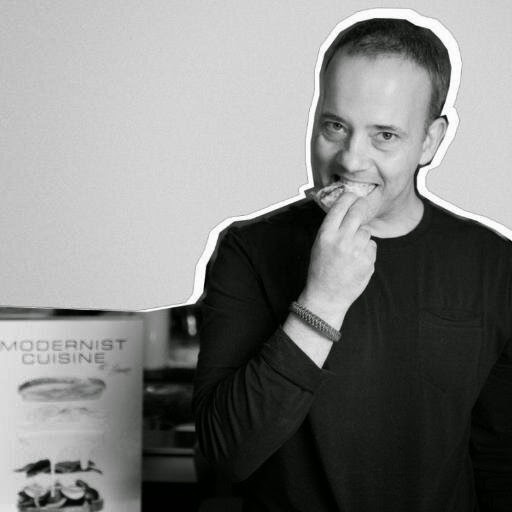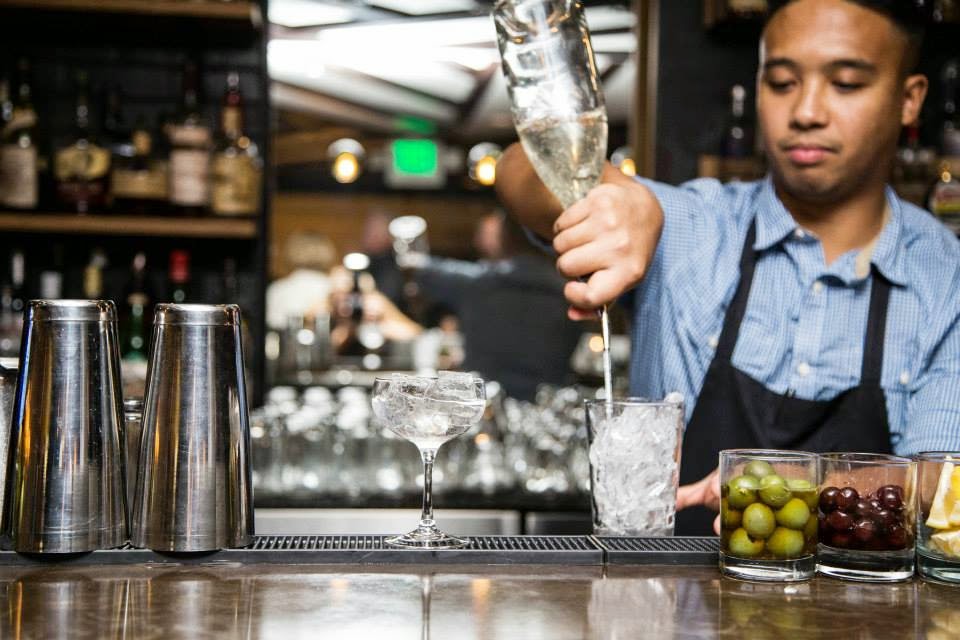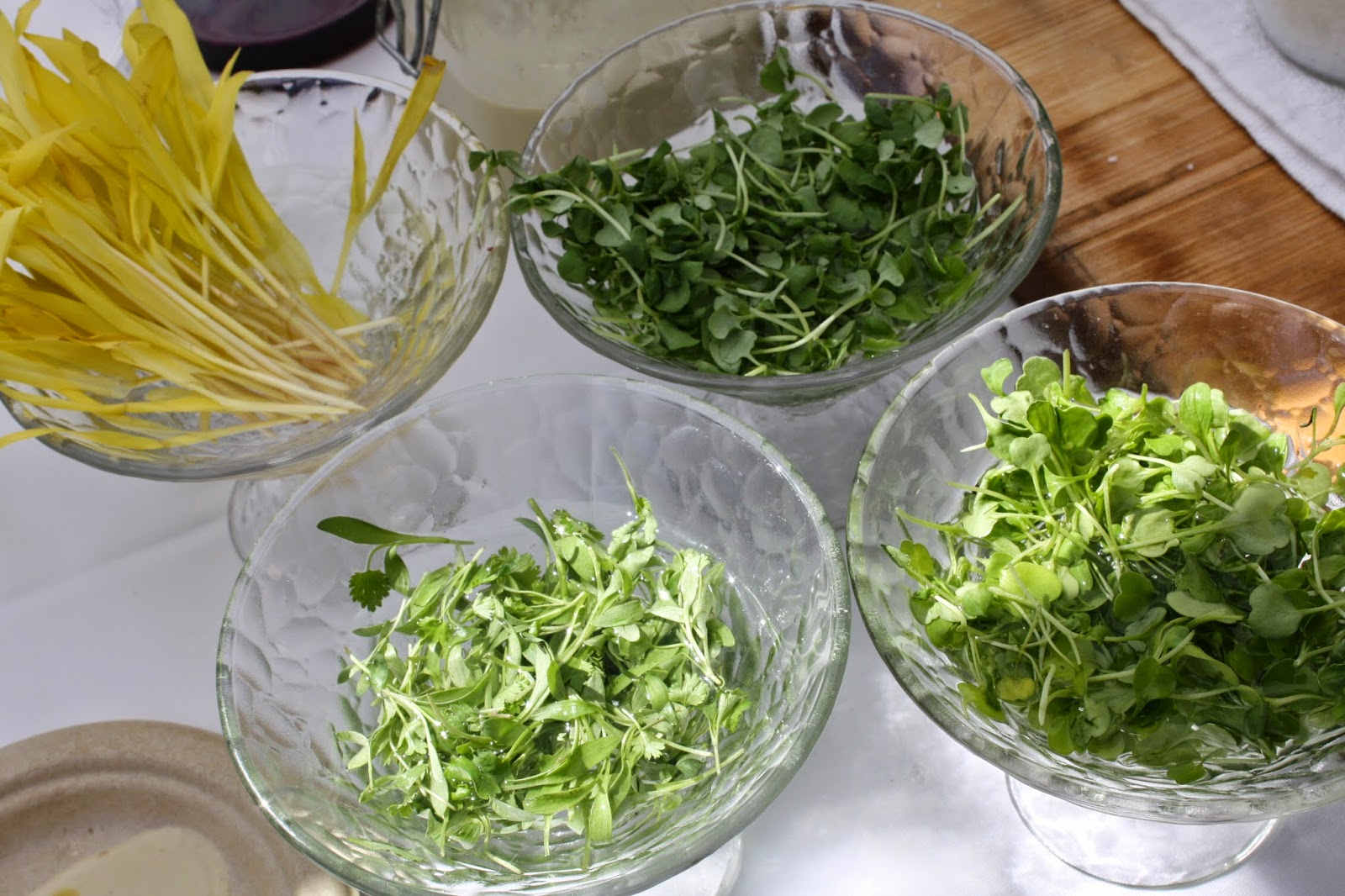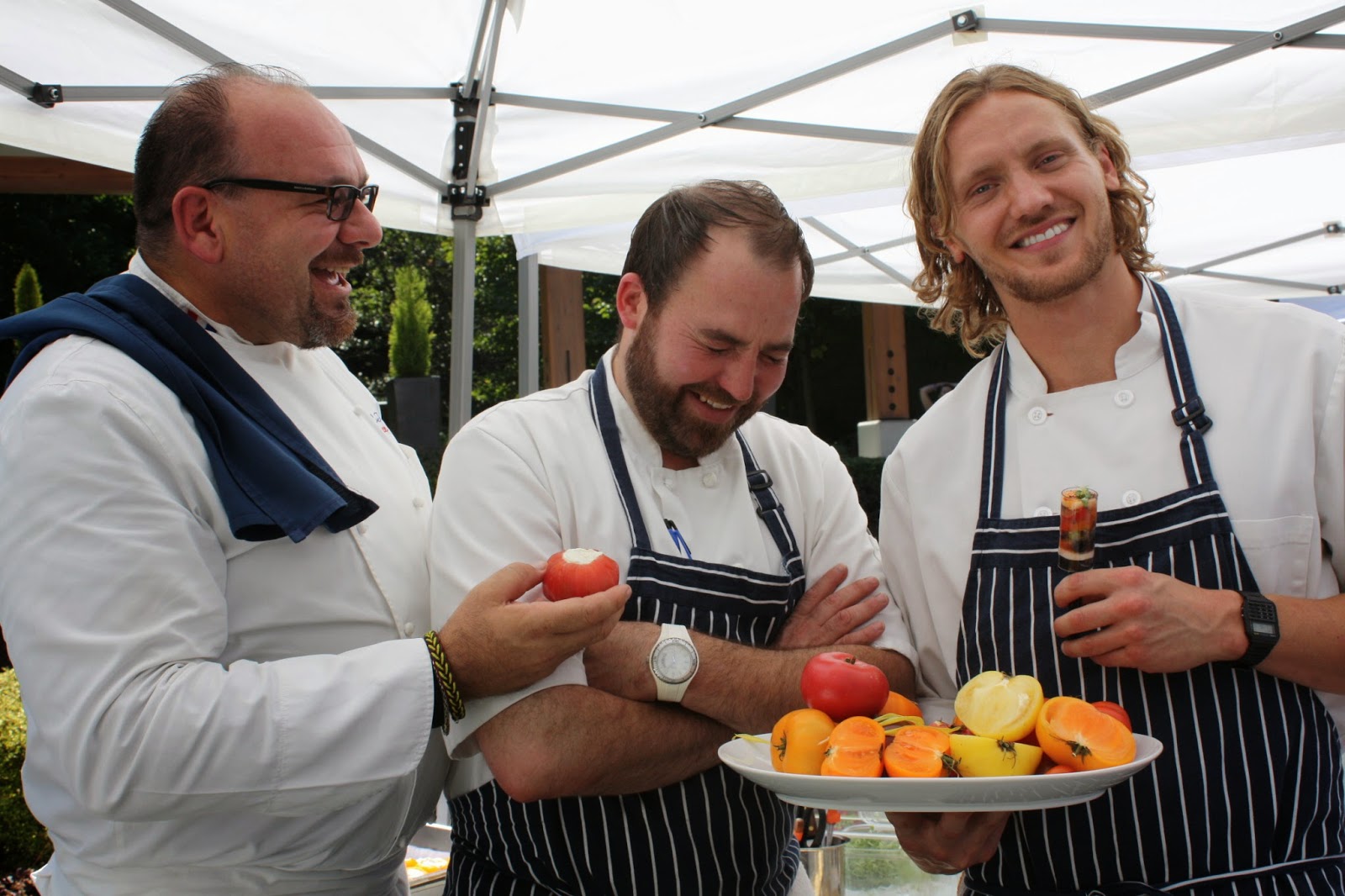You can leave the food business, but it never leaves you. In the heartbeat of every successful kitchen, a methodic order guides your every move. From the adrenaline rush during peak service, to the crushing fatigue after a long day. It drains you, mentally and physically. And yet...there's nothing like the restaurant high. It takes residence in your soul like any other addiction. Concealed, but simmering within. Sure you can leave, then what? Everything pales in comparison, and you know it.
The restaurant business.
She's a wicked muse.
After an 8 year run in Boston's top restaurants, at 25, Andris Lagsdin left the line for an office job in the family business. Supplying industrial parts to Fortune 100 companies like Caterpillar, John Deere, and Volvo, it's a far stretch from life on the line.
Dinner parties and family gatherings were small solace for the 200 covers a night he used to do. Manufacturing job by day, yet keeping up with the latest food news. An astute observer would see, the muse never lost her grip.
February 2011. An article in the Wall Street Journal profiled the release of a ground breaking 5-volume series,
the Modernist Cuisine. Two sentences changed his course forever:
PROBLEM #3: You love Neopolitan pizza, but don't want to invest in a brick oven.
SOLUTION: Make an oven out of a steel sheet.
Until that moment, the closest a home cook could replicate restaurant quality Neopolitan pizza was with stone. But stone never got hot enough. In a restaurant, pizza ovens heat to 900 degrees. A home oven maxes at 500 degrees, and even with the help of a stone, the results pale in comparison.
That night, Lagsdin grabbed a 1/4 inch sheet of steel from the shop floor, and began to tinker. With his first batch of dough, the advantages of steel were immediate, and obvious. Modernist Cuisine explains it best: Steel is a more conductive cooking surface than stone. Because of that conductivity, it cooks faster and more evenly at a lower temperature, resulting in a beautifully thin, crispy crust.
And for Lagsdin?
The muse would no longer be silenced.
Neopolitan-style pizza at home, inspired by Modernist Cuisine.
Q and A with Baking Steel founder Andris Lagsdin
It's been an amazing journey thus far.
Let's talk about that amazing journey.
I studied culinary arts and worked at a lot of restaurants. My last stop was with Todd English restaurants---Figs and then Olives. That was 20 plus years ago. I got burned out and went to work with my dad's business. We design and manufacture products made of steel for Caterpillar, John Deere, Volvo, etc.
I'm still a foodie at heart and love to follow the food world.
Two and a half years ago, I'm reading about
the launch of Modernist Cuisine in the Wall Street Journal. I was so impressed with the idea of this book. A question was asked to Nathan Myhrvold in the WSJ, "How do you create Neopolitan pizza at home?"
I couldn't do it. After making pizza professionally, I didn't think it could be done at home. Myhrvold said to "Google" your local steel shop and use steel on your oven shelf.
I said to myself, "No fucking way!" But it made total sense to me. I ran out to my plant and grabbed some steel, took it home, and made pizza. I was blown away by the results. That was the day the
Baking Steel was born.
I spent the next 6 months researching and developing the product. Then decided to launch on Kickstarter.
I needed to get eyeballs on the product. I knew it was a good idea, but didn't know if the market would respond to a 15 pound pizza stone.
I set a very wimpy Kickstarter goal of $3,000. The money raised would pay for labor and materials for the first production run. I already had $1M worth of equipment that could produce it.
We hit our Kickstarter goal in less than 24 hours. At the end of the month, we pre-sold about 500 units [and raised $38,453--12 times his goal!]
After our Kickstarter, The Baking Steel made Food and Wine magazine, Bon Appetit, Cooks Illustrated, the Wall Street Journal, etc. I was blown away.
We just opened our own test kitchen and now teach pizza classes a few times a month. I have a detached barn in Cohasset, MA, outside of Boston. We knocked down the barn and rebuilt it with a kick ass test kitchen.
The first hands on class I had
Scott Heimendinger, Modernist Cuisine's Director of Applied Research, as a guest chef.
Can you talk about the Modernist Cuisine partnership?
The short version is...they loved what we were doing and wanted to get involved. We designed a steel together and called it the "Modernist Cuisine Special Edition."
It's a different thickness--3/8" thick and weighs 22 pounds. The thicker steels hold more energy, which ultimately rebounds faster between pizzas.
The partnership with Modernist Cuisine gave us instant credibility.
That is an understatement.
No shit. Now I get to do what I love every day. It's been a dream job, for sure. The day I read about Modernist Cuisine in the WSJ changed my life. I'm so glad I trusted my instincts and ran with it.
You spent 6 months in development. What problems were you trying to solve?
Everything from sizing the steel to properly fit in every home oven, to packaging, and how to season it. Then we had to let the world know such a product existed....
A construction company making products for Caterpillar...and now they make what?
It was a big challenge, but Kickstarter made it pretty smooth and easier. Once we spun off the website, it made more sense as well. We designed a very user-friendly site. And I read a lot of books on e-commerce and branding.
Did you hire PR?Not for the first 6 months. Magazines were calling me...but eventually I hired PR for a short term. I recently hired someone again because we're getting ready to launch version 2.0.
A preview of the new Baking Steel, to be launched in Q1, 2015.
What's new with Baking Steel 2.0?
It goes from oven to stove top, with a baking steel on one side, and a griddle with a channel to drain fat on the other side. It works like a dream. At 3/8 inch thick, it can heat up to 700 degrees. As a griddle, you can use it as a smash plate for burgers. And of course you can use it for lower heat foods like eggs, tacos, vegetables, etc.
Can you use it on gas and electric ranges?
Yes. Both. And induction ranges.
What did your dad say when you wanted to develop a product around pizza? Family business diversion...
He loved it from the start. It's a simple product, but profound. It required 0 investment other than my time.
If the Kickstarter campaign was a bust, I'd move on to something else.
Let's talk about Kickstarter and getting those eyeballs on your product.
We launched September 2012. I didn't hire a PR team. I just launched and e-mailed everyone I knew. I thought some friends would support us and they did, but word caught on fast.
And then the Kickstarter crowd caught on and started buying.
When did Kenji Lopez [Managing Culinary Director of Serious Eats] enter the picture?
He called 3 weeks into the campaign and asked for a sample.
I sent him one. By that time, we'd raised $14,000. Lopez used it and said it blew away his favorite pizza stone!
He said he would do a full review, but knew my Kickstarter was coming to an end. He put
a short blurb on the Serious Eats website on a Wednesday. Two days later, our campaign ended at $38,000.
[Lopez later followed up with
an extended article that included multiple experiments, photos, and the science behind why the Baking Steel works. A coup, indeed.]
That's a game changer.
Kenji has a lot of influence.
We also shipped our Kickstarter rewards out before our deadline, which is a little unusual for them.
My brother, Eric Lagsdin, is my secret weapon. He was instrumental during the Kickstarter campaign, and helped meet production needs.
Do you think shipping early helped raise awareness, enabling people to talk about the actual product before the Kickstarter campaign ended?
Totally. People who use it are our best sales team. I'm blown away every day by the e-mails I receive. We work really hard on the customer service end of things.
I see on your Kickstarter campaign, you made notes about shipping internationally. Were you getting a lot of interest outside the US?
Yes, quite a bit actually. We have a distributor in Norway, which sells a lot. And we do a lot of one offs from the US, but shipping is expensive. We've sold Baking Steel in over 20 countries.
Is the Baking Steel manufactured at your family plant?
Yes, entirely here in Hanover, MA.
And where is it sold?
80% of our sales are from e-commerce (King Arthur, Food 52, Amazon.) The rest are sold through Sur La Table stores.
Social media plays a significant role in spreading the word about your product. What's your strategy?
Don't sell, just educate.
I like to blog about once a week, showing off how the Baking Steel works. I try to connect on a daily basis, and to be very approachable.
Just be yourself, and continue telling the story.
Take good pictures and share as much content as you can. We like to post on Instagram daily.
Think outside the box, and show different ideas.
Can you give me an example of your company 'thinking outside the box'?
This week I dumped a bottle of Krug Champagne ($150/bottle) into my pizza dough and made some very expensive pizza. [Champagne reacts with the yeast and produces a different crust.] The blog post will be out in a couple days.
We did a beer dough during Halloween....
Baking Steel launched and got up to speed very quickly. What books were you reading to help navigate the hurdles?
Crush It by Gary Vaynerchuck. For social media, and the rest of his stuff. Videos too. He's an amazing speaker.
Also, anything Tony Robbins. James Altucher for feel good reads...and a lot of food books too.
Which food books?
Peter Reinhart, Jim Lahey, Ken Forkish.
I had to get back in the game.
Ah, dough. That's a whole other beast. You slung pizzas in your restaurant career, no?
Yes, but it was a long time ago, and things have changed quite a bit since then.
What's changed?
For one, the dough. And hand stretching. The concept of less is more. So many experts over think and over analyze the dough.
We love the long, slow cold ferments.
And how less is more on top of the pizza.
Truly, anyone can make pizza from scratch at home. We just need to show folks not to be intimidated by making dough.
It's simple and just requires a bit of planning.
Pizza is such a wonderful social food. We have a slogan, "Create some love."
Two or three families sitting around the table drinking wine, kids help top pizzas and get involved. It's a wonderful evening together.
Biggest take away from the experience? Lessons learned?
Do what you love. Figure it out, and chase it.
And be grateful.
















































































